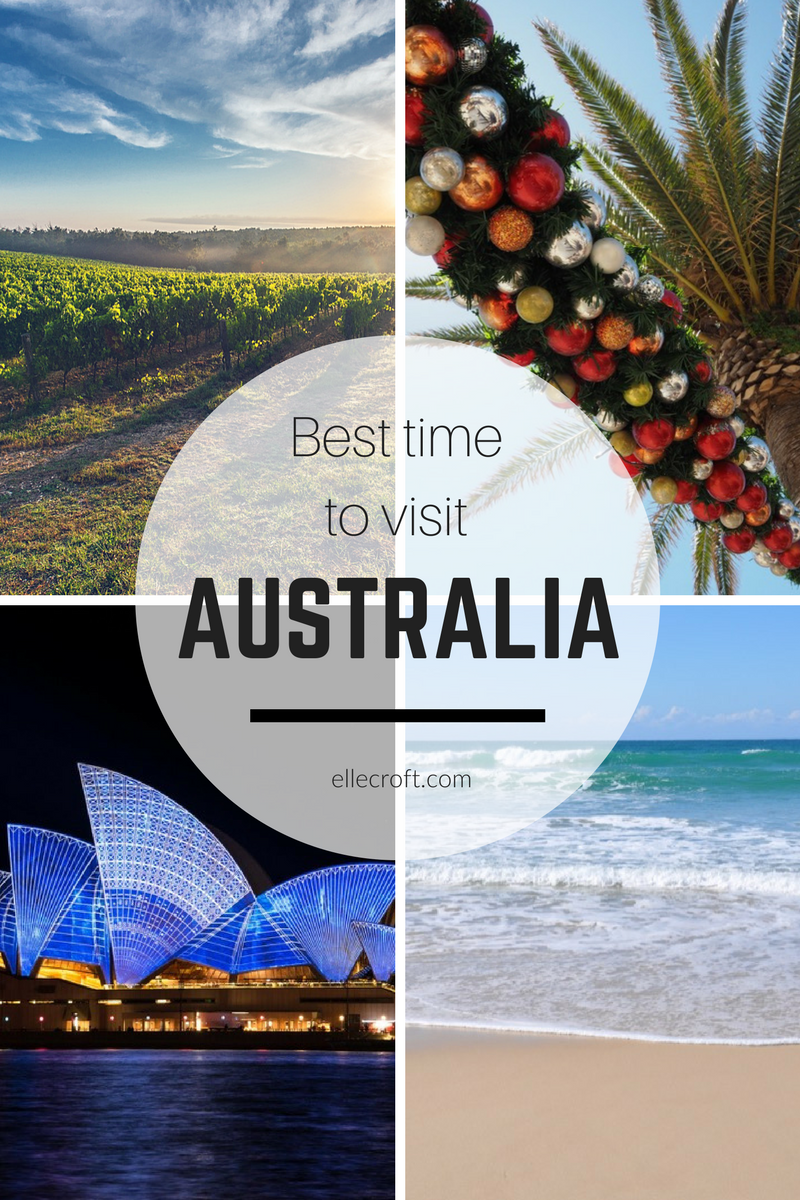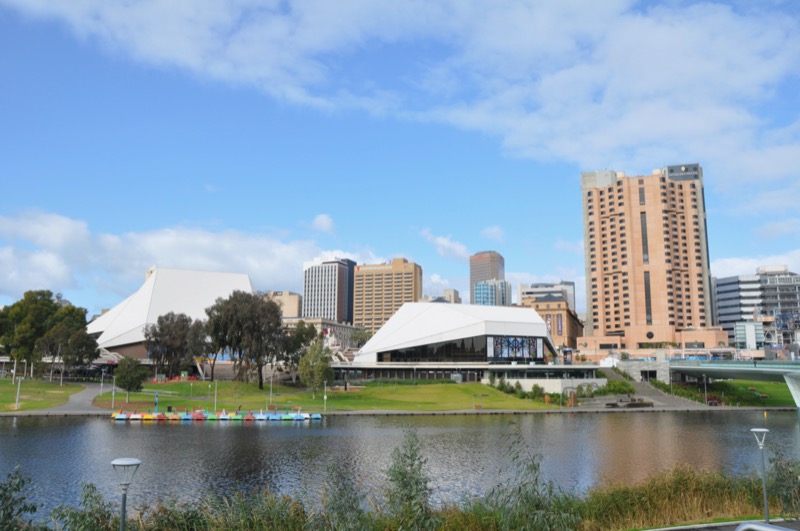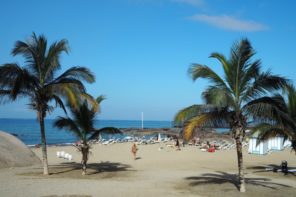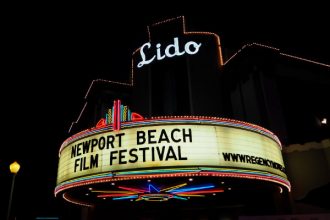This is a question I’ve been asking myself a lot lately.
For the past few years, Brendan and I have been going over to visit our families for Christmas, which has been lovely, but also quite expensive and hectic, and most of our favourite restaurants close down over the festive season.
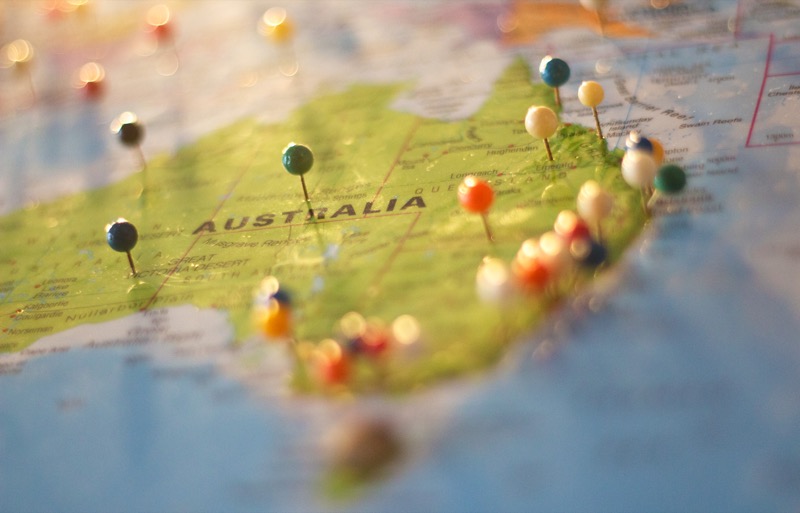
So we decided that, next time we visit our families, it won’t be a Christmas trip. But now we’re feeling a little overwhelmed by the choice of when we should take our next holiday to the land of lamingtons and Cherry Ripes.
To make the decision a bit easier, I’m breaking things down month by month to show what’s going on, and where, for the entire calendar year. And yes, this post is as much for myself as for anyone else looking at holidays to Australia. Fingers crossed it helps!
When is the best time of year to visit Australia?
Australia in January
Summer’s still in full swing, school’s out and most people are only just going back to work in the middle of the month after their Christmas/summer break. This can mean that some restaurants and other businesses are closed for the first week or two, so it might feel a bit quieter than usual, depending where you are.
Tourist-wise, it’s a busy time, so expect bigger crowds in the cities and major tourist attractions. The weather can be unbearably hot, so prepare for the heat, pack sunscreen and always carry water with you if you’re visiting Australia in January! If you’re visiting tropical Queensland, it’ll be hot and humid, and you might experience torrential rain, as this is their wet season.
In terms of events, there’s Australia Day on January 26th, which many Australians – myself included – hope will be changed to a different date at some point soon. But for now, the date remains.
Many cities have fireworks and celebrations (Sydney’s are of course the biggest and probably the best), and most people will have a BBQ on the day, which is a public holiday, but please do be aware of the cultural issues around the date to understand why some people might not be happy to celebrate.
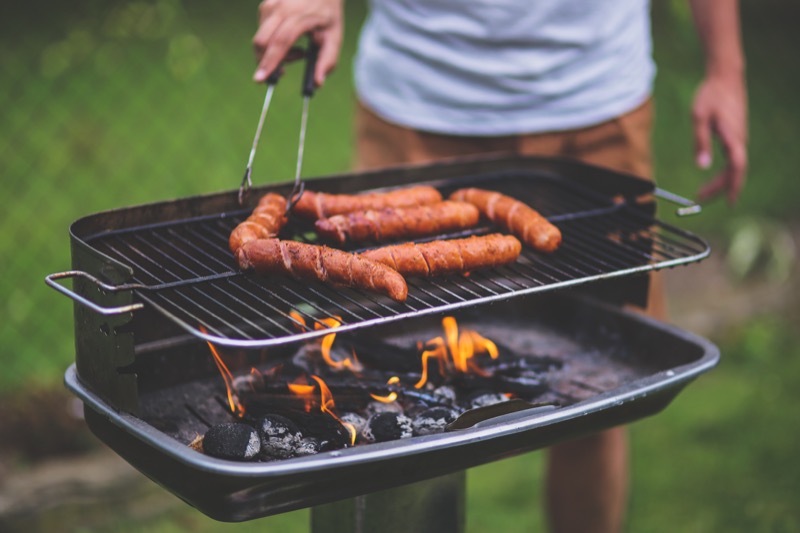
Other highlights include: Sydney Festival, with over 150 events and cultural experiences, half of which are free, the Tour Down Under, with some of the world’s best cyclists riding through stunning scenery in Adelaide, and the Australian Open tennis tournament in Melbourne.
Australia in February
Things start to quieten down in February, with students back at school and most holidaymakers back at work and into routine. It’s still peak summer now, and February is notorious for blistering heatwaves, but if you can handle the heat, February is a nice month to visit Australia. It’s still the wet season in tropical Queensland, with frequent torrential rainfall, and generally hot and sticky days.
If you’re keen to visit Tasmania (and you really should visit Tassie, it’s spectacular), February’s a good time – with an average temperature of 22.1 degrees, it’s about as hot as it gets in this cool-climate part of Australia. Plus, if you visit in February you’ll catch Festivale, a food and wine festival that takes place in Launceston.
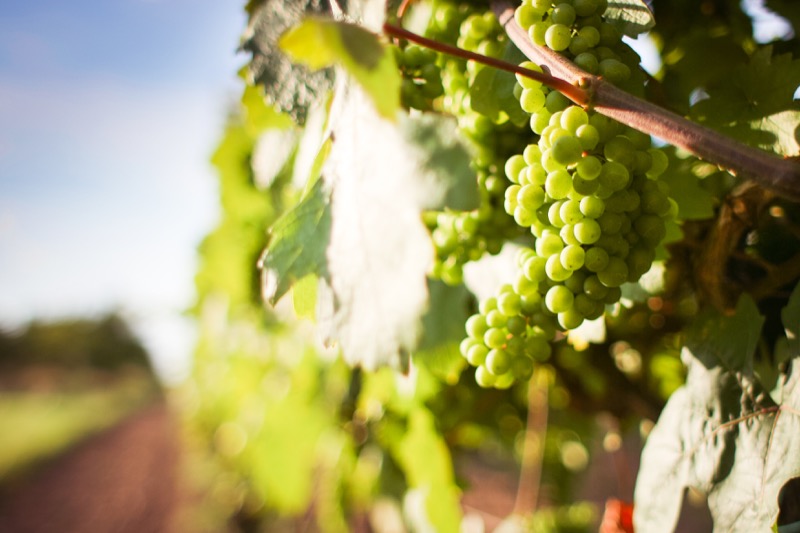
Further afield, Perth is packed with events in February, most notably its International Arts Festival, and the World Super 6 golf tournament. Sydney hosts an epic Chinese New Year celebration in February, and Melbourne comes to life after dark with its White Night event for one night only.
And finally, in Australia’s Capital City, Canberra, there’s the National Multicultural Festival, a three-day celebration of cultural diversity.
Australia in March and April
I have to admit, March in Australia is brilliant. It’s when the heat of summer starts to fade just enough to make things comfortable again.
It’s the end of the wet season in Queensland, so you might still get some torrential rain, but it’s the tail end of the worst of it.
There aren’t many tourists around (compared with peak season) because few people take their main holiday in March, but depending where you go, there’s plenty to experience around the country.
If you visit Adelaide in March, you’ll get to experience March Madness, which is basically when all of the city’s annual festivals happen in the space of a few short weeks. Adelaide Festival is the biggest and most famous, but you can basically walk anywhere in the city and find something to see and do. Personal favourites of mine include the Garden of Unearthly Delights, and Adelaide Writer’s Festival.
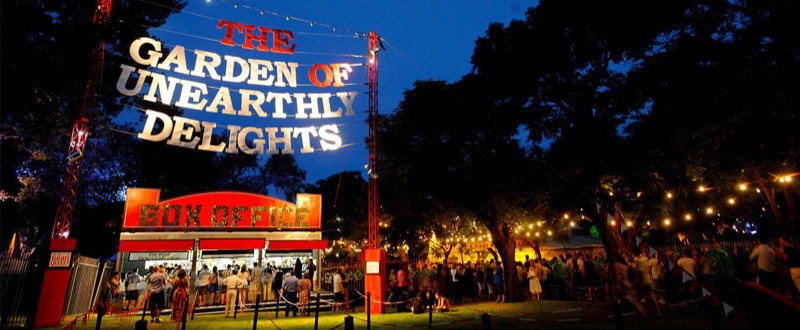
Image source: gardenofunearthlydelights.com.au
Thanks to Easter holidays, April tends to get a bit busier in terms of tourism, but flights are still more affordable than in peak summertime, and there are loads of events on, which makes this a good time to visit. Plus, rainy season is over in Queensland by now, so you shouldn’t get washed out!
The longest-running surfing competition in the world, the Rip Curl Pro, takes place along the iconic Great Ocean Road in April, which makes it a great time to do this unforgettable road trip. And if surfing’s your thing, you can also go to Western Australia to the Margaret River Pro, which happens to be held in an incredible wine region.
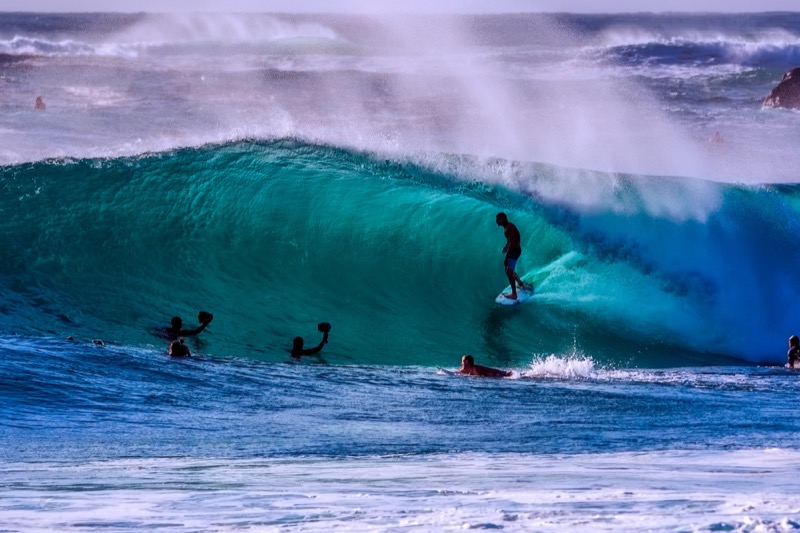
May in Australia
The weather is most certainly heading towards winter in Australia in May, so the biggest festivals are cooling down as fast as the temperatures. Don’t worry, though – in Brisbane, for example, you’ll still get average temperatures of around 24 degrees. You won’t need to pack a proper jacket unless you’re further south (Victoria, South Australia and Tasmania all experience cooler winter temperatures).
Many of the events happening in May are focused on food and drink – and that’s one area where Australia truly excels! The High Country Harvest Festival hits country Victoria, Clare Valley Gourmet Weekend offers good food and world-class wine in a stunning setting, and the Noosa Food and Wine Festival combines a number of Aussie classics: good food, great wine, and jaw-droppingly beautiful beaches.
If you’ve had your fill of food festivals, you might like Blues on Broadbeach Music Festival on the Gold Coast, the dazzling light displays of Vivid Sydney or the glamour of Mercedes-Benz Fashion Week.
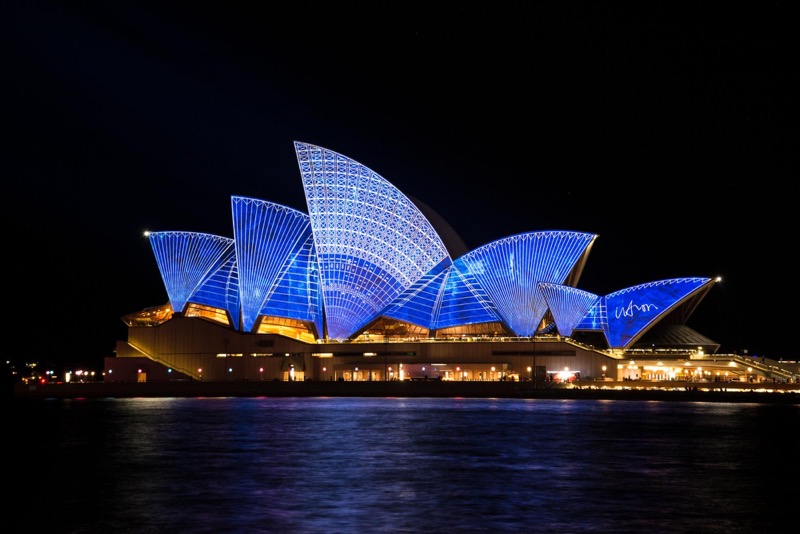
June in Australia
It’s definitely getting cooler by now, so if you are visiting Australia in June, it’s best to stay as far north as possible to stay warm. If you’re in Queensland, you might even be lucky enough to spot humpback whales migrating south, as this is the beginning of whale-watching season up along the Queensland coast.
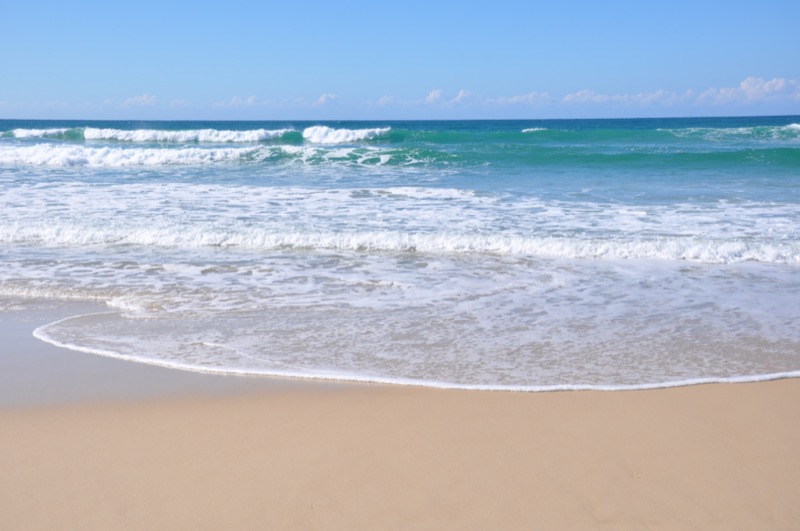
School holidays haven’t really started in the northern hemisphere, so June is a pretty quiet month to visit, and you can often get really reasonably priced flights. And there’s still loads to do in June, with festivals and events to suit every taste. Here are some of the highlights:
Go truffle hunting at the Truffle Festival in and around Canberra, enjoy good music and great wine at McLaren Vale’s famous Sea and Vines festival just outside of Adelaide, celebrate the long winter nights at DARK MOFO in Hobart or tap your feet to the rhythm at the Melbourne International Jazz Festival.
Australia in July and August
The Northern Hemisphere summer has officially begun, so things get a little busier in July and August, although the weather is definitely at its coolest.
If you love snow sports, you can get your skis on at some of Australia’s best mountain resorts. The most popular destinations are Mt. Buller, Thredbo, Mt. Hotham and Perisher, and although you won’t find epic powder like you would in Europe or North America, in a good season it’s surprisingly good!
If you’re really not keen on the cold, you might like to visit the Northern Territory, where in the depth of winter, the temperatures don’t drop below 20 degrees at night, with days up around the 30 degree mark. Similarly, tropical Queensland rarely sees truly cold climates, so visiting in July means you’ll still get great weather, but without fear of melting!
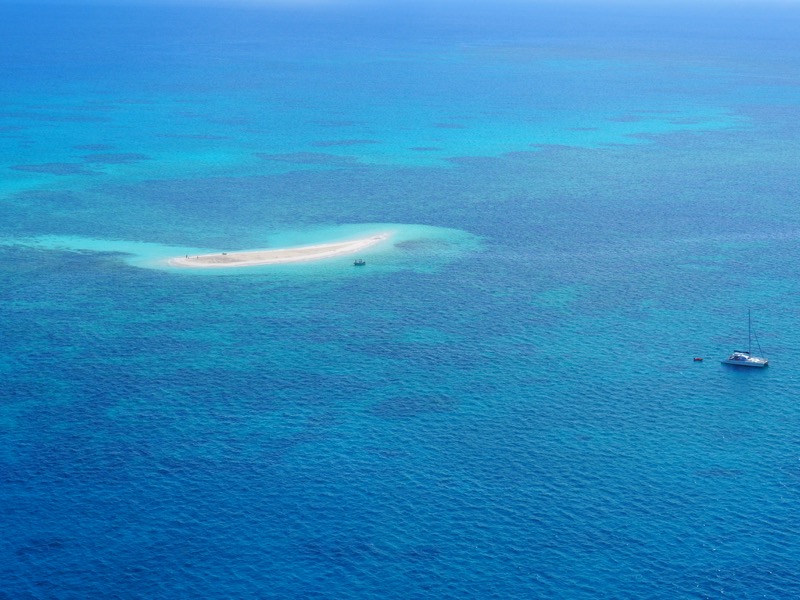
September and October in Australia
Spring is arriving, and with it, the temperatures are rising in September and October.
Just like in the northern hemisphere, spring in Australia heralds the arrival of stunning blooms and blossoms in a number of different destinations around the country. One of the most famous flower festivals is Floriade in Canberra, the largest flower festival in the southern hemisphere, which runs for an entire month.
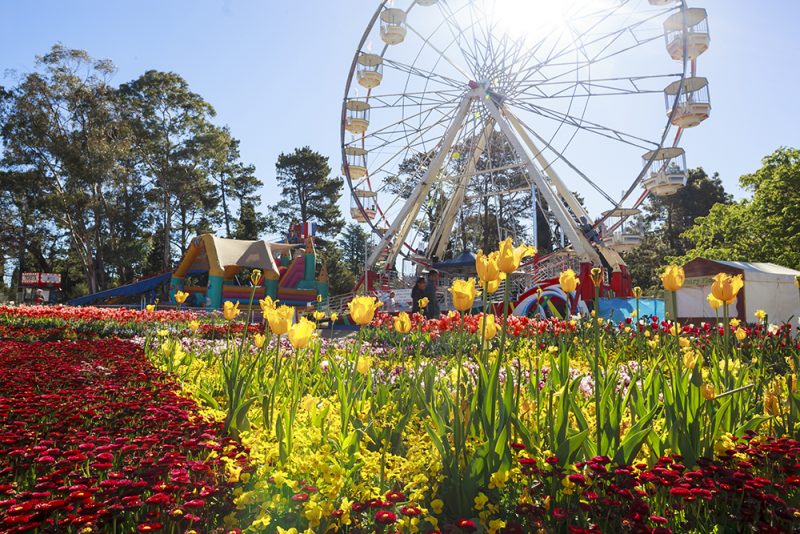
Image source: floriadeaustralia.com
King’s Park Festival in Perth also celebrates the arrival of native wildflowers, and there are even self-guided drives and tours that can be done around the state of Western Australia to see it as it blossoms. There’s also the Renmark Rose Festival, which takes place in the South Australian Riverland, and the Tesselaar Tulip Festival that happens just outside of Melbourne.
For a proper Aussie sporting experience, go check out an Australian Rules Football match – the final is at the very end of September, so in the month leading up to the main event, there’s plenty to be watched in pubs and homes across the country.
November and December in Australia
Although Christmas isn’t until December, the festivities begin long before, with Christmas pageants and parties starting in November.
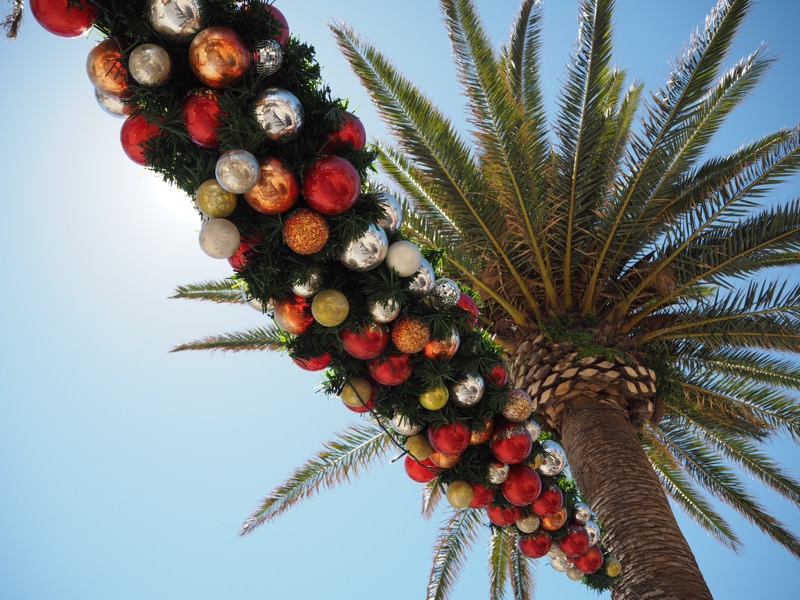
Christmas in Australia is definitely a unique experience. Expect to see baubles on palm trees, Santa on a surfboard and fake snow in shop windows when it’s boiling hot outside. Many cities host outdoor carols services where you can pack a picnic and sing along as the sun sets, often with candles for a really atmospheric Aussie experience.
As summer is heating up, the sporting season is really taking off, with cricket matches in every city, the Hopman Cup tennis tournament in Perth, the Australian PGA Championship golf tournament on the Gold Coast and the famous Sydney to Hobart yacht race, which is a spectacle to behold.
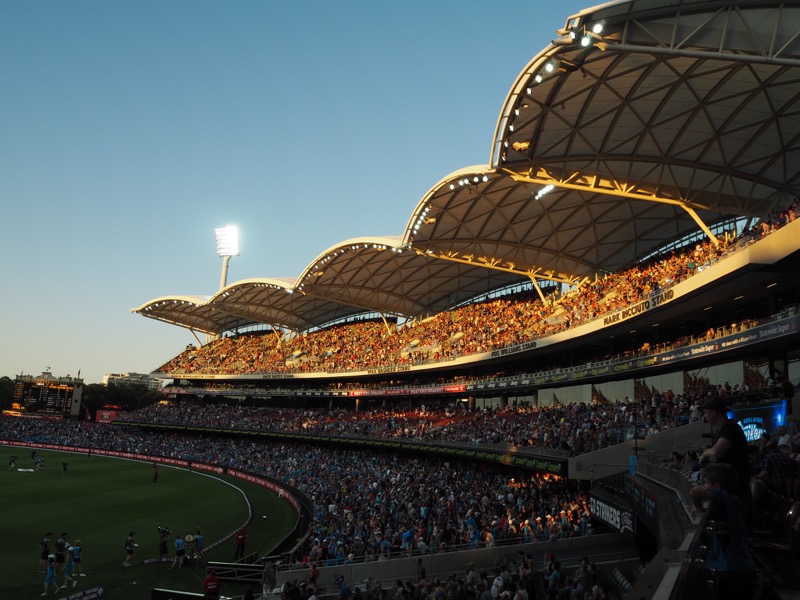
November and December are fun months to visit Australia in, but as many expats are returning to see their families at Christmas, it’s worth keeping in mind that flights are at a premium in December, so the cost of your holiday could significantly increase if you choose to go during the festive period.
Now that I’ve done all this research, I think I’ve made up my mind: I have to visit Australia in every month of the year!
How about you? Which month would you visit Australia in?
Thanks to Flight Centre for sponsoring this post. All opinions are, as always, my own.
Pin this for later:
